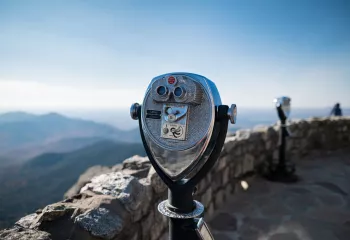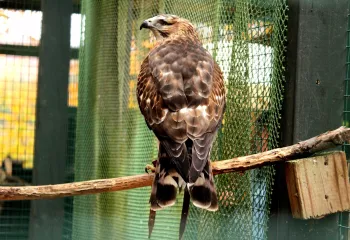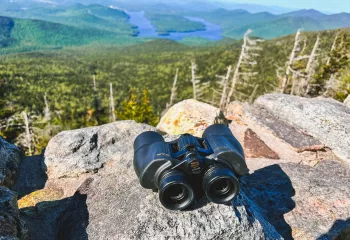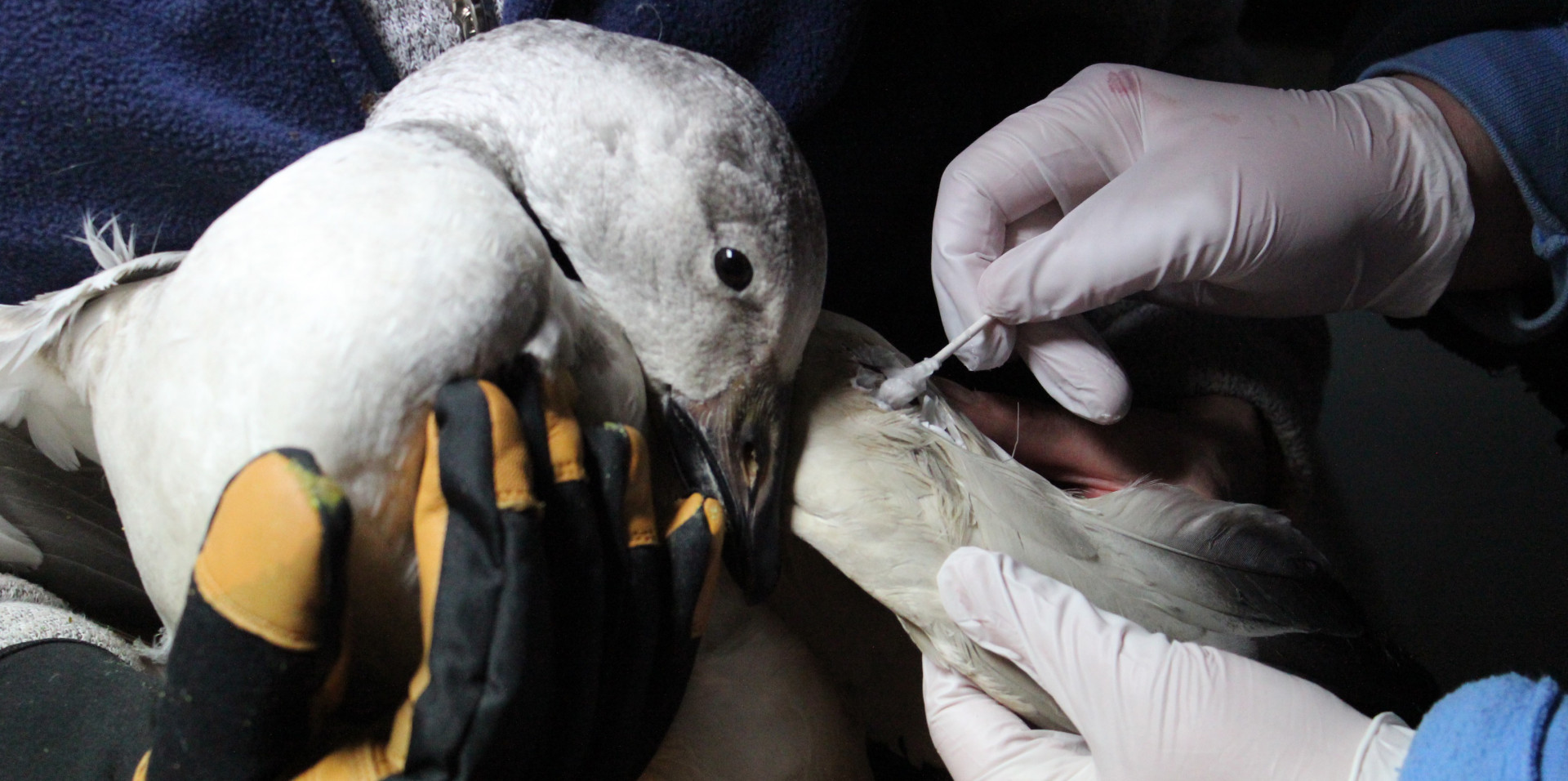
The last time I spoke to Wendy Hall on the phone she was distracted by a crow named Russell, which was loudly squawking in the background. Russell has an affinity for perching in her hair and often follows Wendy, who started the Adirondack Wildlife Refuge and Rehabilitation Center with her husband, Steve, as she cares for the other animals there.
I like to stop by the refuge a few times a year just to see what's going on there. It's free to visit, just be aware that it isn't a zoo. If you show up, be prepared to learn about the species who live there and to hear about how they ended up there. That second part is important — the Halls accept sick and injured wild animals, and staff there do what they can to get the animals healthy enough to return to the wild. That's not always possible, though.
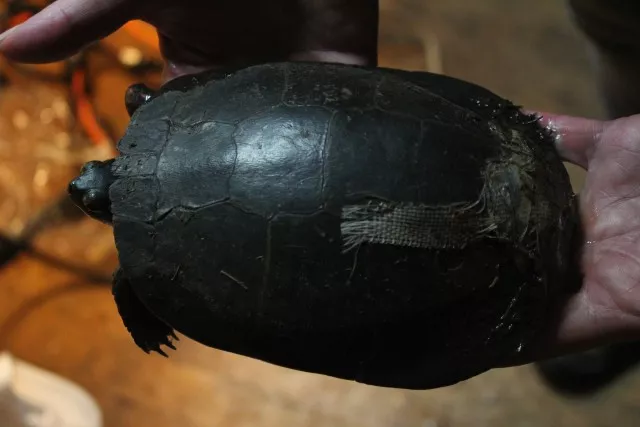
Last week, Wendy brought me to a cage containing a merlin that was born with one wing. From one angle, the bird looks normal and ready to take flight, but when it turns there's no left wing. There isn't a nub or a stump or a scar — the wing simply isn't there.
"When the guy brought him to me, he thought he had a broken wing, but when I looked there was no blood or anything," Wendy said. "Sometimes they're just born like that."
It goes without saying that a one-winged bird wouldn't survive in the wild, but the Halls have found another purpose for such creatures: education. Animals like the merlin are brought to classrooms, museums and events throughout the region to educate the public. Wendy wants people to know how amazing these creatures are, so she shares plenty of facts about things like how fast they move and how they've adapted to their surroundings.
There's also a human-interaction side to the lesson that isn't often found in birding guidebooks. Wendy told me she wants people to make connections. That rat poison you put out might end up in a bird's belly; that baby bird crying on the lawn might not be in trouble unless you touch it. In a nutshell: If you find an injured animal, don't try to take care of it yourself. Call the refuge.
Touring the refuge was like meeting Wendy's extended family. They're an excitable lot, quick with a caw or a chirp. There are bald eagles, snowy owls, a porcupine and a turkey vulture. All were discovered by concerned people, and all arrived under dire circumstances, in various states of disrepair.
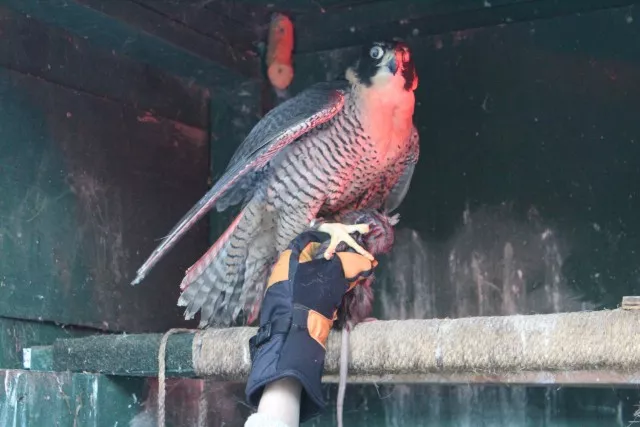
During my visit, Wendy introduced me to a peregrine falcon that's nearly blind. She's not sure why; it was found that way. The medium-sized birds can reach astonishing diving speeds of 200 miles per hour — the fastest in the world — so maybe its compromised vision is the result of that?
Other injuries were more obvious.
Last year a juvenile great blue heron was brought to the refuge in an emaciated state. The bird wasn't able to catch his own food and probably wouldn't have survived to see another summer.
"When we first got him we had to force feed him; open his mouth and get fish and mice in there because it wouldn't work putting live fish in," Wendy said. "Now he's an eating machine."
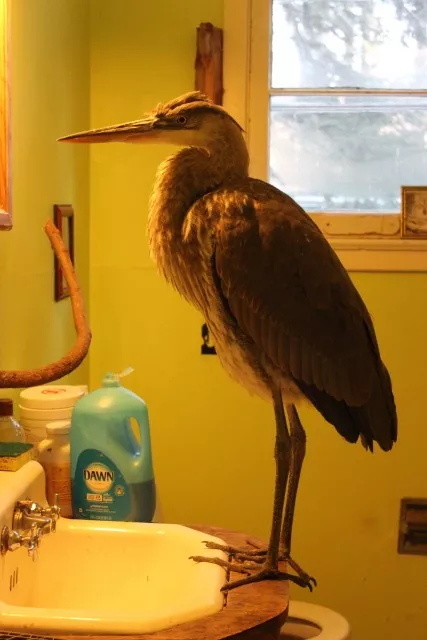
Once the heron regained his strength he was put into a flight cage to practice flying. He was released into the wild last fall, but came back to the refuge shortly later. Wendy attributes that to the unseasonably warm winter the region has had.
"We are getting animals in that just don't get it," Wendy said. "All of these animals are perfectly fine except they don't know how to hunt, and they're emaciated," Wendy said. "I'm talking great-horned owls, I'm talking several different species."
After meeting the heron, I got to watch Wendy and two of her interns tend to a young snow goose that was shot in the wing. They carefully used a sodium chloride solution to clean the wound and an antibiotic to help the skin heal as the wide-eyed creature cowered helplessly in Wendy's arms. Once treated, she released it in an outdoors pen to feed the goose and give it some exercise.
I remember the pen from my last visit because it's where the refuge's wolves used to live. They're still there, but now they have a much larger pen to roam around in. Anyone visiting the refuge will be greeted by them because they're right next to the parking area, prowling and howling their way through the trees.
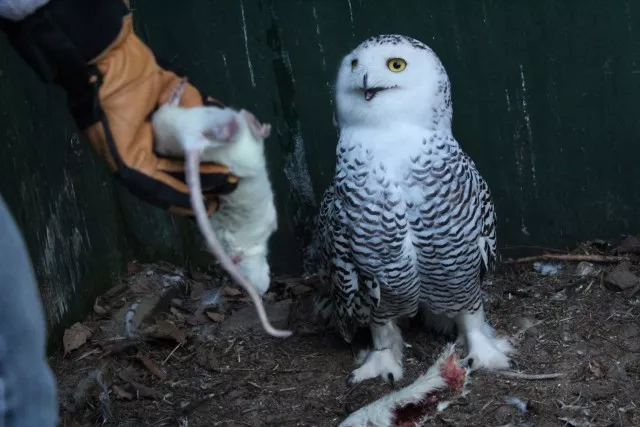
The Adirondack Wildlife Refuge is chock-full of animals that are on the mend or fully rehabilitated but not able to be released. Most of them represent species that are native to the area. Among them are bald eagles, snowy owls, a turkey vulture and a gray fox. Wendy and her staff give demonstrations throughout the day, and they're happy to explain their work to curious visitors. You never know what you'll find there, but one thing never changes — you'll always walk away with a newfound understanding of the effects humans can have on other species.
The wildlife refuge is the perfect place to visit after a morning of skiing, hiking or snowmobiling!
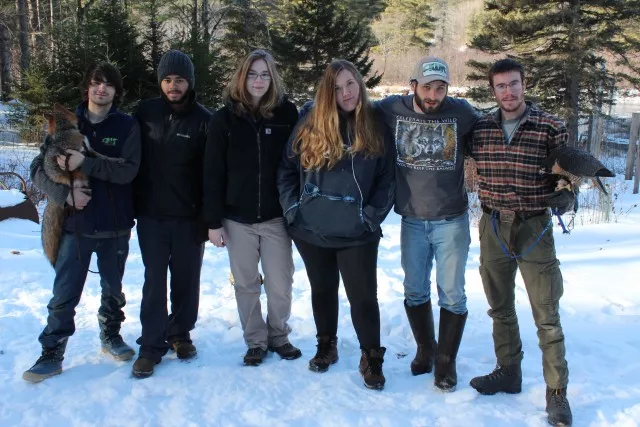
Taking flight around the ADKs this week:
Eating out of the palm of your hand — literally.


